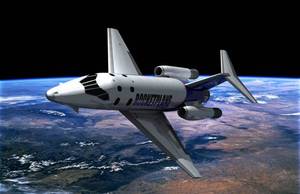The human race will one day split into two separate species, an attractive, intelligent ruling elite and an underclass of dim-witted, ugly goblin-like creatures, according to a top scientist.
Comment: This is not such a harmless joke as it may seem. Recent social changes and scientific advances certainly corroborate the old prediction that H.G. Wells had made. All over the world inequality is rising, while upward mobility is stagnating, which contributes to the physical and reproductive isolation of classes from one another. Additionally,
technologies for genetic enhancement are beginning to be discussed; like plastic surgery, they will be available primarily to the upper class, further separating people.
The author of the current hypothesis,
Oliver Curry, has a background in political sciences. His interest is in evolutionary explanation of social, moral and political behavior. He is a member of the interdisciplinary research group called EMPG (the Evolutionary Moral Psychology Group) that hopes to understand human morality using "recent advances in evolutionary biology,
game theory, animal behaviour, evolutionary psychology and neuroscience". In other words, they say that we do good unto others because it ultimately serves ourselves or our genes.
Dr. Curry's current work aims to "deepen and extend this evolutionary account of morality by turning some of the predictions that evolutionary theory makes about human moral and political psychology into tractable experiments, and putting them to the test. This includes work on the evolution of patience, on attitudes to abortion, and
on moral decision-making in psychopaths."
It is ironic that to explain altruism, Dr. Curry uses a framework that glorifies selfishness (evolutionary or otherwise). Even so, he can't help noting that the current societal trends lead to the rise of psychopathic behavior. An older
BBC NEWS story on this same subject quotes him as follows:
Spoiled by gadgets designed to meet their every need, they [people] could come to resemble domesticated animals. [..] Social skills, such as communicating and interacting with others, could be lost, along with emotions such as love, sympathy, trust and respect. People would become less able to care for others, or perform in teams. The problem with Dr. Curry's overall conclusion is that psychopaths have no concept about the long-term effect of their actions. This is precisely why they are 'amoral' in a conventional sense of the word that Dr. Curry and his colleagues are sticking to. Psychopaths view other people and their whole environment as an expendable resource. It doesn't occur to them that when they trash everything around them, they themselves will to be destroyed.
It is obvious to anyone who follows the news that we don't have 100,000 years to split into two morphologically different subspecies, nor do we have a thousand years to get to live for 120 years.
On the other hand, one can say that psychopaths do represent a distinct sub-species of
Homo sapiensl. They look the same as the guy next to you, but their evolutionary survival strategy is different: instead of cooperating with others, they feed on them. This is eerily similar to how Morlocks feed on helpless Elois, while the latter are ignorant of danger even though they feel it unconsciously.
The world is burning NOW. It behooves one to descend from the ivory tower and face the grim reality.

Comment: Forget About Global Warming: We're One Step From Extinction! is an excellent article discussing just what we are very likely going to be up against in the not-to-distant future.